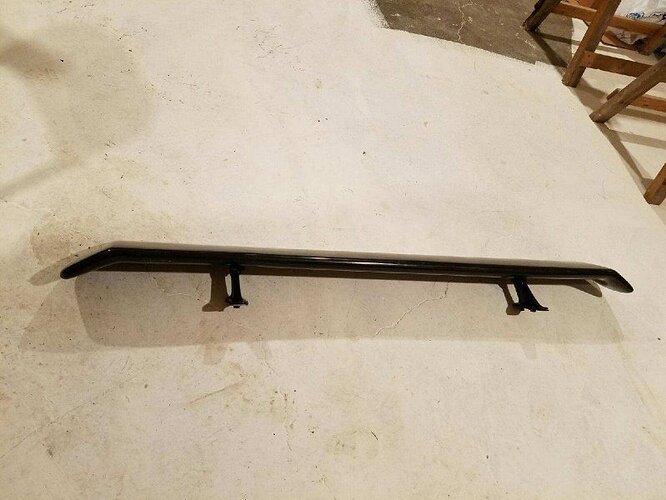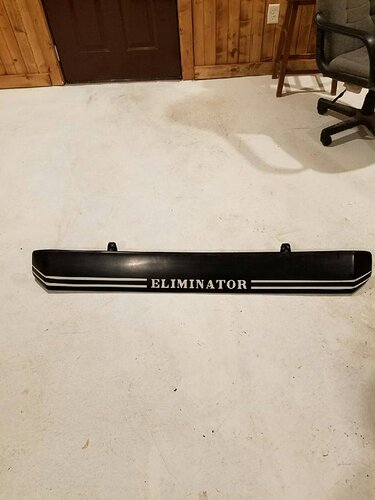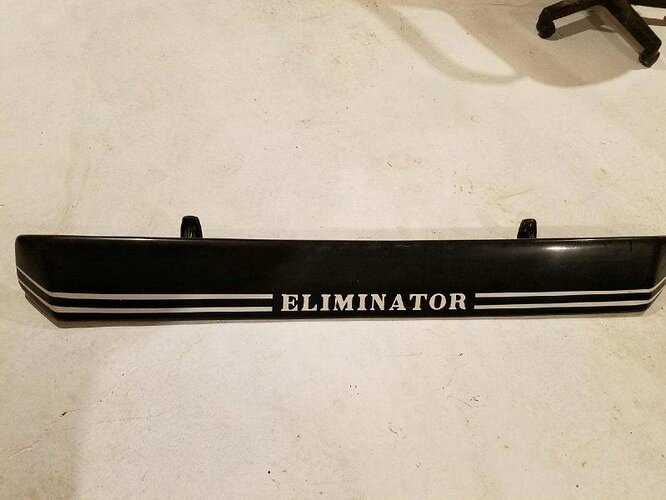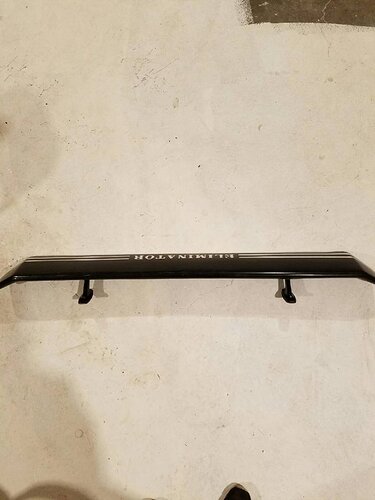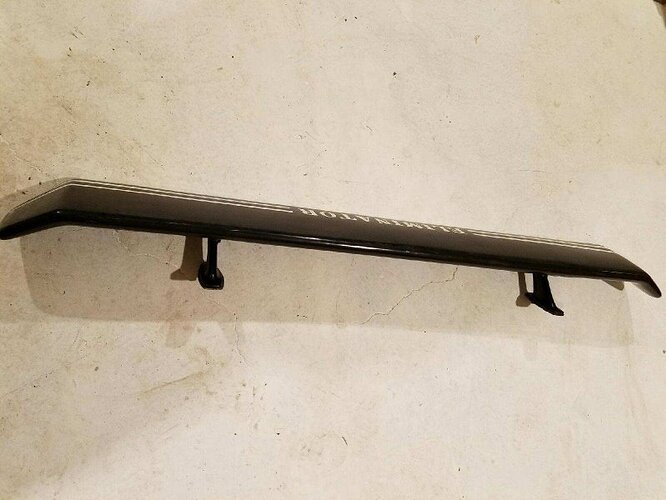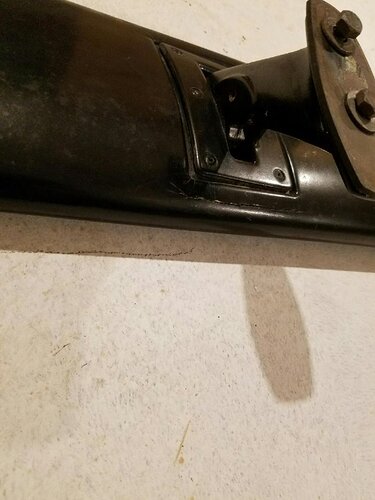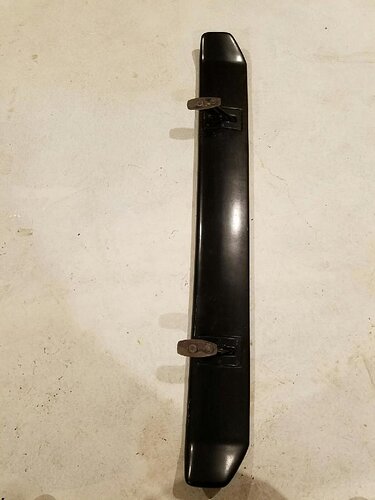I haven’t removed it yet to see the part # just wandering what they are bringing? not sure if it is a 69 or 70?
The 1969 Eliminator wing is very different than the 1970, as the pedestal spacing is much smaller. That makes the 1969 wing “Cougar” only, and as such quite valuable. If you find one for less than $500 to $600 - I would buy it! The 1970 wing is pretty much the same as the Mustang wing, with the difference of the underside mounting brackets. The 1970 reproduction wing is a very good quality and match to the original. Original 1970 wings do have a part # on the spoiler pedestals, and can bring $400 or so if in good condition. Hope this helps…
Asking price on original '70’s tend to be around $400-500, depending on the included hardware (plates, spacers, etc.).
69’s seem to bring a bit more, say $500-600 for a good example. '69’s have the “sag” issue, and many of them show splits and damage, which will affect value.
69 Cougar has a pedestal spacing of about 31" and is hollow, light weight polymer (hence the sagging).
69 Mustang has a pedestal spacing of about 35" and is hollow, light weight polymer (also sags).
70 Mustang & Cougar have pedestal spacing of 35" and are a heavy, solid fiber / resin material.
Cougar and Mustang each used different mounting brackets, bolts, plates, spacers, etc for each year.
I hope that helps! When you pull it off, post some pics of what you have - wing, pedestals, hardware and all.
*I was writing as Scott was posting, LOL! Glad to see my info jives with his ![]()
I pulled it off tonight the measurements are for a 1969 it has been on this car since the 70’s so is there a part # ? where would it be?
I have never seen a part # on a 69 spoiler.
ebay item # 282810866965
Here is the direct link to the eBay sale: https://m.ebay.com/itm/1969-cougar-eliminator-original-rear-deck-spoiler-wing/282810866965?hash=item41d8d75d15:g:ZGUAAOSwgLlaXUkX
Steven
That is definitely a 1969 Cougar Spoiler based on measurements and pictures of the stanchions!
The 69 spoilers were two piece PVC pieces “sorta bonded” together at the seam. To try and keep them bonded together, the spoilers were laid on the long edge and resin was poured in the openings for the stanchions and left to cure. Once cured, it was flipped over and process repeated. This worked great for a few years…but eventually the resin, which doesn’t bond to PVC directly, pops loose and bounces around on the inside of the spoiler! Somewhere I have pieces of this resin…a perfect negative impression of the perfectly smooth inside of the spoiler!!! Had the manufacturers roughed up the PVC surface before gluing them together, and then dumping in the epoxy…it may have lasted a few years longer…
There were small metal strips where the stanchions attached, for the pop rivets to hold to. Many times only one or two pop rivets per side were actually holding things together instead of three. Lots of cracks develop in this area…
1970 spoilers were made of “sheet molding compound” a “cured by heat” compound produced in large sheets or blocks which had to be stored in refrigerators…and then pressed into shape by HUGE presses which once closed, heated to activate the chemicals in the SMC which caused the stuff to harden…then they were removed from the molds and the two parts were glued together somehow…either resin or epoxy…
As a result, 70+ spoilers are very much heavier things, which is why the prop rods were needed!
Mustangs and Cougar shared the same 'type" spoilers and stanchions excepting the width of the stanchion pattern for each respective year.
A 69 spoiler will have a rear profile of about 1/2" thick or 1/4" radius, where a 1970 spoiler is much sharper at about a 1/8" radius on the rear edge. 1969 stanchions are a large affair with a big piece that is pop riveted into the spoiler with 6 rivets. 1970 spoilers stanchion mounts are cast into the fiberglass, and the stanchions held in place with two metal strips retained by 3 special for fiberglass Phillips oval head screws each. Under one of the 1970 stanchions you will find an air hole so that the spoiler can “breath” when heating and cooling…
1969 stanchions are coarse finished cast alloy pieces with short 5/16" bolts used to attach them to the decklid. Solid on the underside. No part numbers. No decklid reinforcements for Cougars, may have been something for 69 'stangs. 1970 stanchions are precision molded diecast pot metal which do have Ford part numbers inside the bottom cavity. These have studs in them and attach with nuts and reinforcing pieces for the underside of the decklid. Gaskets are fully formed nylon pieces with part numbers. 69 gaskets appear to be simple flat pieces…
I have never seen a 1969 Cyclone or Spoiler spoiler. Although I suspect that the Dodge rear spoilers may have been made by the same company/process. In 1970, the Cyclone and Spoiler models used the same spoiler as the Cougar and Mustang, with differences for the under decklid provisions.
You will notice that a 1970 Cougar decklid has cutouts on the left and right underside reinforcement stamping, where the spoiler reinforcements would attach!!! 1969 Decklids do NOT have these cutouts…
Of course 68’s were never “spoiled”!
Hope this helps!!!
Cheers!
Steve
Steve,
Nice summary.
I have a slight disagreement with the 1970 mounting. I believe that the early spoilers were attached with 1 bolt and 1 stud on each side. At some point in the 1970 model year it changed to 2 studs per side.
The 70 Cougar elim. that I sold, was built in Oct.69 and was like Dave said.
